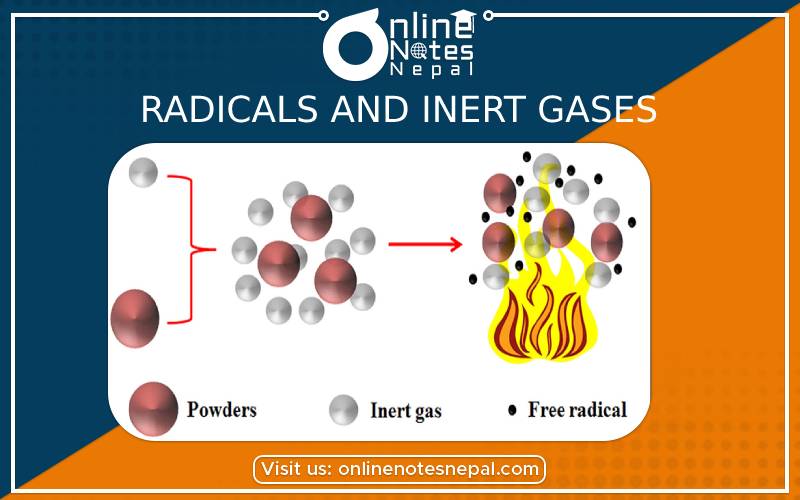Published by: Nuru
Published date: 16 Jan 2022

Radicals are also called Free Radical. It refers to a molecule that contains at least one unpaired electron.
A radical is an atom or a group of atoms of different elements having positive or negative charge and acts as a single unit throughout the chemical reactions. They do not exist freely.
On the basis of electric properties or behavior, radicals can be classified into:
The elements fall into the zero group of the periodic table are inert gases or noble gases. They are helium, neon, argon, krypton, xenon and radon. These elements are chemically inert because of their stable electronic configuration. Among all of them, only helium contains 2 electrons in their valence shell while the remaining contains 8 electrons in their valence shell. Those elements which have 8 electrons in their valence shell and do not take part in a chemical reaction are called inert gases. The given table shows the electronic configuration of inert gases,
Duplet and duplet rule:
The arrangement of two electrons in the K-shell is said to be duplet. It is chemically inert because it has a complete number of electrons in its K-shell. Helium is a duplet as it has two electrons in K- shells. Hydrogen, Lithium, Beryllium and Boron also attains a stable electronic configuration similar to that of a helium atom. It is called duplet rule. The tendency of an atom with single shell to attain two electrons in its K- shell is called duplet rule.
Octet and octet rule:
Except helium, the other inert gases have 8 electrons in their valence shell. Such arrange of a stable group of 8 electrons in their valence shell is said to be octet. Some atom of elements make 8 electrons in their valence shell by gaining, losing or sharing electrons between the combining atoms during the formation of a molecule is called octet rule.
Difference in octet and duplet rule:
The key difference between octet and duplet is that octet is an atom or an ion having a maximum of eight electrons in the outermost shell while duplet is an atom having the maximum of two electrons in the outermost shell.